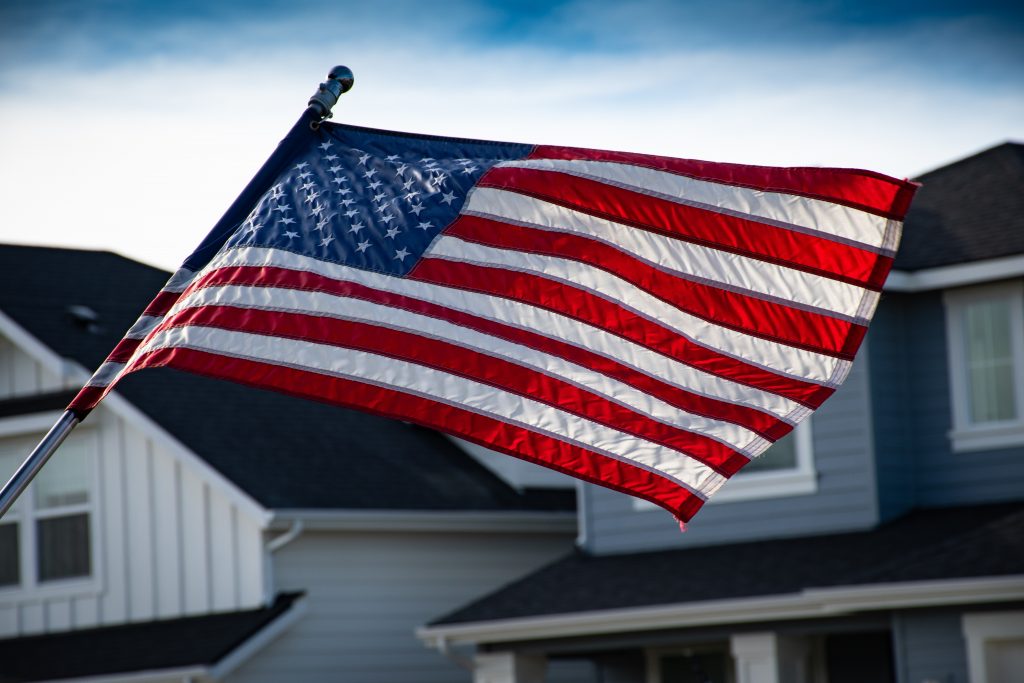Executive Summary
The American Dream, contrary to its name, was anything but a dream to complete. The mega-mall, located in East Rutherford, New Jersey, was envisioned to be a major retail and entertainment complex that would serve the New York and New Jersey community. In its seventeen-year history, the project has faced numerous complications including financial strains, change in ownership, scheduling, and legal issues. Despite all of its challenges, the American Dream is still striving to reach completion and success.

Initial Development
Plans for the megamall began back in 1994 under the direction of The Mills Corporation. It was originally to be named the Meadowland Mills and was to be housed in Carlstadt, New Jersey, which is the neighbor of its current home in East Rutherford. The project quickly garnered criticism from the public and experts, who cited environmental concerns over its location. (Corkery, 2019). After a study was conducted by the EPA, it was deemed an environmental hazard and the project was subsequently scrapped. By 2002, the Mills Group had partnered with Mack-Cali, a real estate group, to construct a bid to develop the project on the old Continental Airlines Arena. The name was changed to Xanadu and the ground was broken in September 2004.
Financial and Budgeting Woes
In 2009, with about 80% of construction being completed, lenders began pulling out quickly due to the financial crisis. This caused the project to lose nearly $500 million in funding for construction (Pries, 2019). Additionally, retailers began to pull out of their leases as well, which caused more financial strife for the project. By the time construction was completed in 2019, the project’s costs came to approximately $5 billion, with nearly $1 billion coming from New Jersey taxpayer money (Funcheon, 2020). Although the project’s ultimate budget was so large, the American Dream’s several developers were unable to effectively utilize the funds available. Today, the American Dream’s construction might be complete, but their financial troubles are far from over. In early 2020, the American Dream was sued for failing to pay nearly two dozen contractors a combined total of $13 million for their work (Zoppo, 2020).
Constant Change of Hands
Throughout its nearly seventeen-year history, the project has been under the management and ownership of several different groups. In 2006, which was slated as the mall’s original opening year, Xanadu was bought out by Colony Capital for $500 million (Hurley, 2015). Due to the financial collapse of 2008, Colony Capital was then forced to hand the project over to a group of five lenders in order to cut their losses. One of these lenders was Triple Five group, the owners of the Mall of America in Minnesota. They were interested in finishing the project and successfully acquired a $700 million loan in order to complete it (Fung, 2020). The name was eventually changed to The American Dream, which is what it is known as today.
Scheduling Conflicts
As a result of challenges being faced in the development of the project, the American Dream developed of stigma of being chronically delayed. Originally scheduled to open in 2006, construction delays and change in ownership led the completion of the project to be pushed back until 2008 (Pries, 2020). After the demise of the economy in 2008, the project saw an indefinite hold in construction and was left all but abandoned until 2011. Over the next few years, construction would be on and off frequently, as Triple Five disputed various lawsuits. Many of these were in regard to building permit issues as well as traffic regulations related to the mall’s proximity to MetLife Stadium (Pries, 2020). The American Dream’s inability to define a timeframe in which the complex would open was a major concern for the public and arguably was the largest factor into why many did not have faith in the project altogether.
Legal Troubles
The project and its developers have seen their fair share of legal troubles over the years. The most prominent is that of Joseph Ferriero, a New Jersey politician who was charged with racketeering, conspiracy, wire fraud, bribery, and mail fraud. Ferriero was caught bribing a developer on the project for $2 million in exchange for political support. By paying his agency a fee of $35,000 a month, Ferriero agreed to publically support the developer’s bid for the property (Zambito, 2015). Additionally, the megamall faced an additional lawsuit after the theme park section of the American Dream had opened. In January 2020, a female employee sued mall after claiming she was wrongfully fired for reporting racist and sexual harassment remarks that were made towards her by supervisors and colleagues (Redmond, 2020). The legal troubles the American Dream faced did not help the mall’s already struggling reputation.
The Future of American Dream: COVID-19 and Beyond
The future of the American Dream remains to be uncertain. Although the launch of the theme park section of the property showed to be a success, the team was forced to cancel the opening of the retail and dining portion due to the outbreak of COVID-19 (Fung, 2020). In the midst of the continued chaos, the mall currently has no scheduled plans to reopen. With retailers struggling to pay rent and keep storefronts afloat nationwide, tenants dropping out has become a primary concern (Verdon, 2020). Additionally, it has been reported that Triple Five Group, the current owners, have fallen behind on their mortgage payments for their other properties (Funcheon, 2020). This has left many worried about the status of the American Dream and if it has the funding and commitment to last before it even gets a chance to fully open.
Personal Thoughts and Recommendations
I believe many of the problems the American Dream faced were due to poor organization and lack of a sound vision. Throughout its varied history with leadership, the American Dream and its developers were far too concerned with current consumer and market preferences. This allowed the goal of the project to become meddled and slip through the cracks. Additionally, the entire project, due to its grand nature and complex structure, was risky. Developers did a poor job assessing this risk and planning around it. In turn, more complications arose then were anticipated and there was not a plan in place to attempt to remedy them. Moving forward, I would advise project managers and team members working on the American Dream to assess any future risks to help plan more efficiently. I would also advise that the team focuses significant efforts to increase the public’s interest in the mall via marketing. With a tarnished image already in place, it is likely that New Jersey citizens and other customers alike do not think highly of the mall. One example of doing so could be running promotions on the rides and attractions there would draw in guests, particularly those with children. Additionally, presenting a discount for New Jersey residents on admission fees and in select retails stores and restaurants will also show solidarity with the community and serve as a thank you for their patience over the many years of development. By doing so, they will attract more consumers and help restore the community’s faith in the project.
Conclusions
All in all, the construction of the American Dream was a complex process that was met with a multitude of challenges. Amid scheduling, ownership, and financial issues, the project remains nearly complete and will hopefully hold a successful launch following the COVID-19 pandemic. Although it has faced severe backlash amongst the community and stakeholders, the project will hopefully serve as an example for future projects of this nature to come. Despite all of its challenges, the American Dream is still striving to reach project completion and success.
About the Author:

Kara Durning is currently an MBA student at Montclair State University. She is expected to complete her degree in December 2020 and her professional interests include accounting and finance. In her spare time, she enjoys traveling, spending time with friends, and supporting her favorite team, the New York Yankees. Click here to know more about the author: http://www.linkedin.com/in/kara-durning
References:
Corkery, M. (2019, October 24). After 15 Years, Dream Mall Finally Becomes a Reality.
Https://Www.Nytimes.Com/#publisher. https://www.nytimes.com/2019/10/24/business/american-dream-meadowlands-mall.html
Funcheon, D. (2020, June 10). Mall Of America Owner Staring Down Billions In Debt. Bisnow. https://www.bisnow.com/south-florida/news/retail/american-dream-developer-in-deep-debt-104755
Fung, E. (2020, July 14). Triple Five Faces Big Covid-19 Woes, but Analysts Say Don’t Write It Off. WSJ. https://www.wsj.com/articles/triple-five-faces-big-covid-19-woes-but-analysts-say-dont-write-it-off-11594728002
Hurley, A. K. (2015, October 9). Will Anyone Come to the American Dream Super Mall? The Atlantic. https://www.theatlantic.com/business/archive/2015/10/does-america-still-want-the-american-dream/409804/
NJ Advance Media for NJ.com, Avalon Zoppo. (2020, June 24). Contractors say they’re owed $13M for work done on American Dream mega-mall. Nj. https://www.nj.com/news/2020/06/contractors-say-theyre-owed-13m-for-work-done-on-american-dream-mega-mall.html
NJ Advance Media for NJ.com, Allison Pries. (2019, October 10). American Dream: The 16-year (and counting) journey of a mega-mall that might actually open kind of soon. Nj. https://www.nj.com/bergen/2018/06/american_dream_how_did_a_swath_of_land_in_the_mead.html
NJ Advance Media for NJ.com, Thomas Zambito. (2015, April 16). Guilty: Former Bergen County Dem boss convicted in “politics for profit” scheme. Nj. https://www.nj.com/news/2015/04/ferriero_verdict.html
Redmond, K. (2020, January 31). American Dream Worker Sues Mall, Claiming Racist, Sexual Remarks. Wyckoff, NJ Patch. https://patch.com/new-jersey/wyckoff/american-dream-worker-sues-mall-claiming-racist-sexual-remarks
Verdon, J. (2020, June 15). The American Dream Mall Had Retail Problems Before Coronavirus. Now, They’re Worse. Forbes. https://www.forbes.com/sites/joanverdon/2020/06/14/the-american-dream-mall-had-retail-problems-before-coronavirus-now-theyre-worse/#3b6604f273e4


Recent Comments